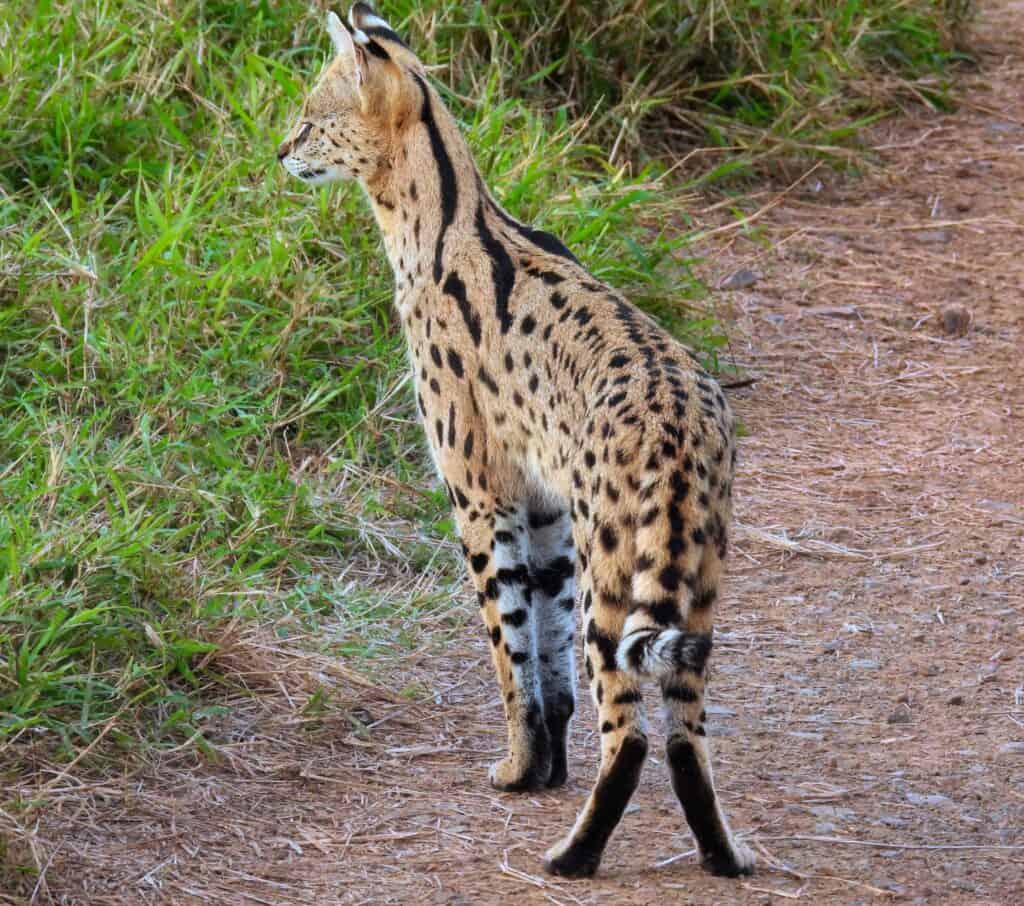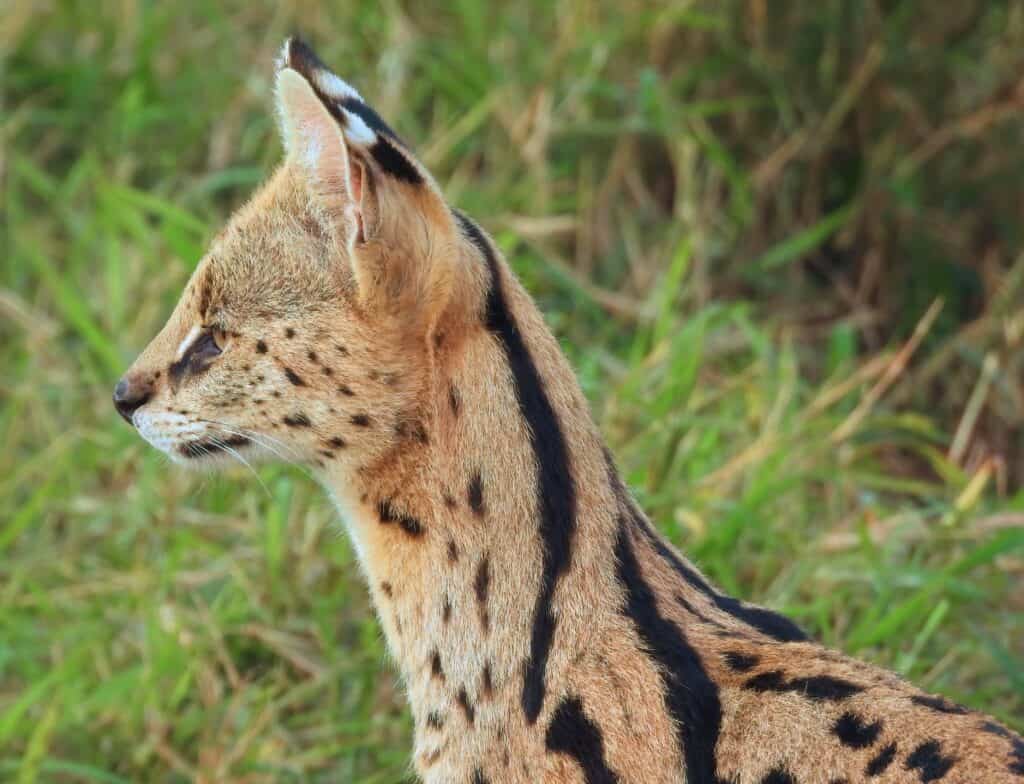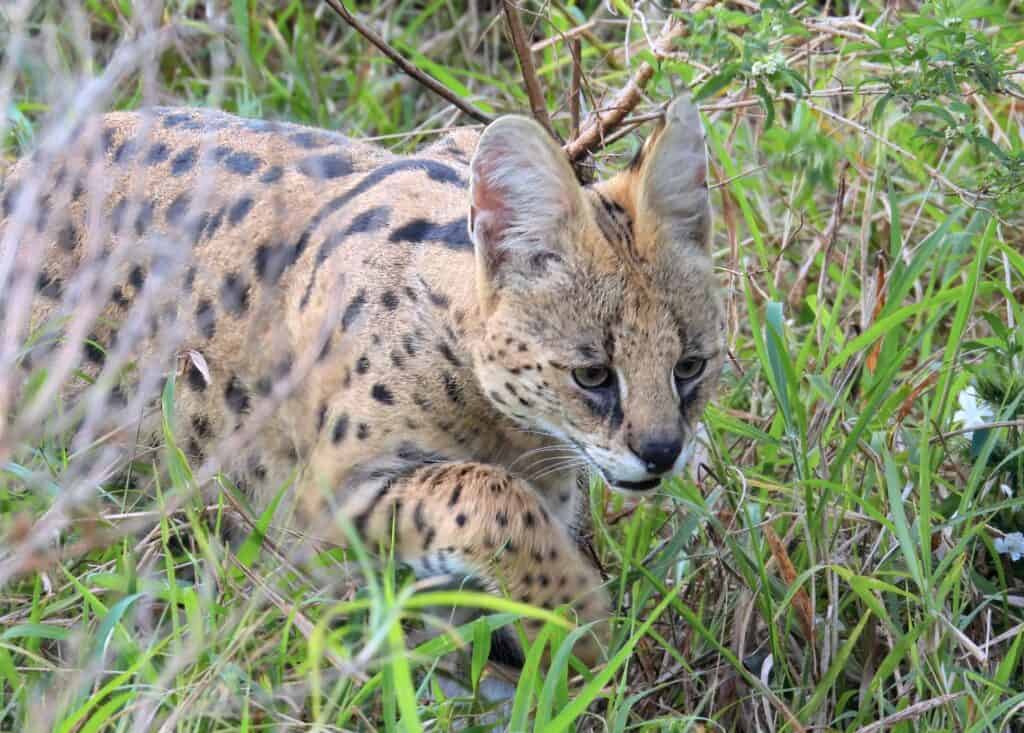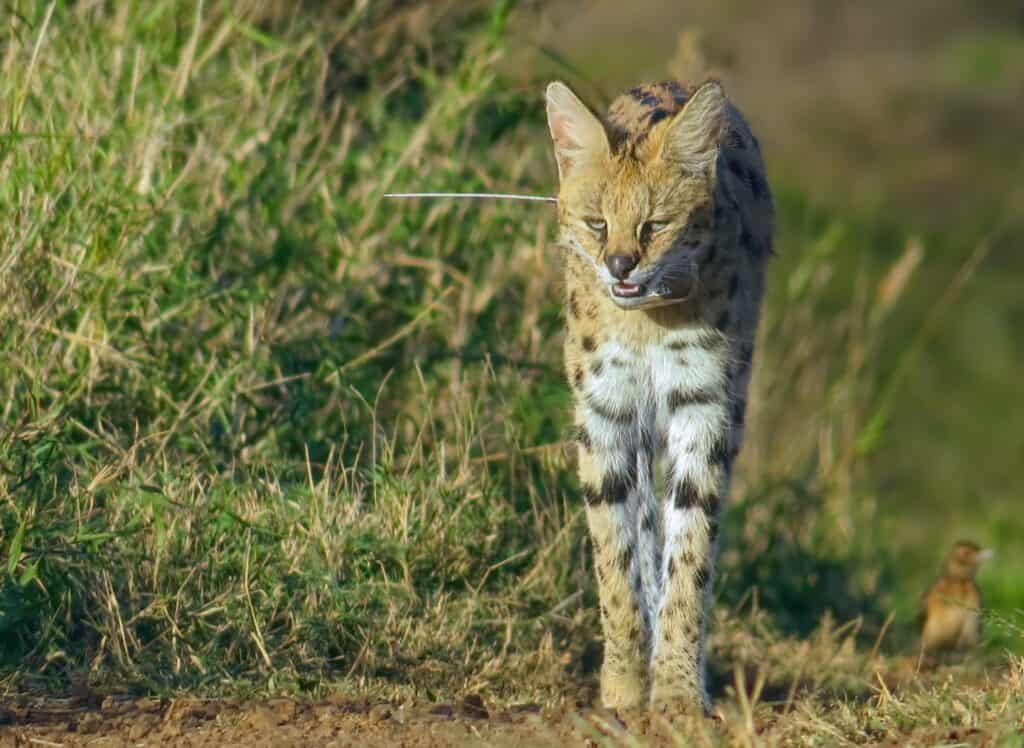By Judy Mead, Operations Specialist for The Wild Source
In Africa the big cats get all of the attention but you are missing something special if you don’t spend time with one of the most charismatic of the smaller African cats – the serval. Servals have legs for days and are daytime hunters, making them one of the species that can turn your safari experience into something magical.

Seeing a serval in the wild brings a sense of watching something explosive. Servals are incredibly athletic and can jump more than 9 feet high to catch birds right out of the air! Serval diets are mostly made up of rodents and they catch what they are hunting up to 62 percent of the time, making them one of the most successful hunters in the natural world. They will often make more than 15 kills in 24 hours, making every moment with a serval exciting. To increase the likelihood of a successful hunt, servals jump into the air and use their front paws to smash into a rodent, incapacitating it, before taking a bite. Despite the myth that tigers are the only cats that like water, servals are often found in wetlands and marshes and will wade into the water to catch snakes and frogs.

Servals (Leptailurus serval) are widespread across sub-Saharan Africa and are common in protected areas. There are three subspecies of serval and they can be found naturally in 35 countries. Outside of protected areas they are still hunted for their luxurious fur or may lose habitat as human encroachment takes prime hunting areas. Servals have been known to kill domestic poultry and are often seen as pests in urban areas. Kittens can be born at anytime of year and stay with their mother until they are around a year old. Servals give birth to one to three kittens every year after maturity, on average. Serval kittens are born blind with soft, woolly coats and are much greyer in color than the adults. Servals’ average lifespan is 13 years in the wild. Big cats and other larger predators can be a threat to both adult cats and kittens.

Servals are solitary and like to hunt along disturbed areas, making roads a fantastic spot to catch these beauties. Servals are medium sized cats at 24” tall and can weigh up to 40 pounds – way bigger than your average house cat. Unlike the big cats that can roar, servals are often mistaken for birds when they chirp; they can also purr, unlike a lion or a leopard.

Serval research has greatly increased our understanding of these majestic creatures in recent years. Collars are often used to track animals’ movements, increasing our knowledge of home ranges, hunting grounds and behaviors. Collars have little to no impact on the natural behaviors of the animal but can be difficult to remove if they stop transmitting, especially on these wide ranging, smaller cats. How do you feel about seeing collared animals on safari?
Have you spent time with a serval on Safari? What do you remember most about it? Send us your serval stories and pictures!